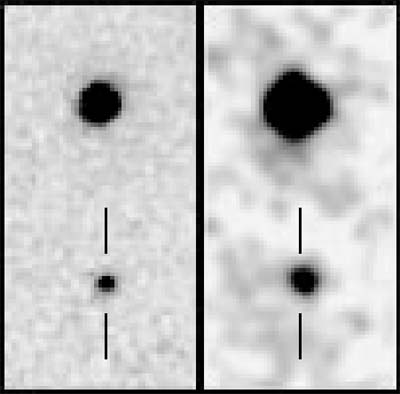The Hubble Space Telescope has seen what could be the oldest and most distant object in the universe - a galaxy with a redshift of 12. Most galaxies observed so far have redshifts of between 1 and 4, and the most distant galaxy observed to date has a redshift of 6.68. Now Mark Dickinson from the Space Telescope Science Institute (STScI) in Baltimore is trying to observe the object - which was photographed in the Hubble Deep Field North in 1998 - from the ground with one of the 10-metre Keck Telescopes in Hawaii. Dickinson's paper will appear in the Philosophical Transactions of the Royal Society (astro-ph/0004028).

There are four possible explanations for the object: a highly obscured galaxy, an old elliptical galaxy at redshift 3 or 4, a galaxy at redshift 12, or an intergalactic carbon star. However, there are problems with all of these interpretations. “It would be very strange to have found a highly obscured galaxy with colours this extreme in one very small area such as the Hubble Deep Field image,” says Dickinson. And if the object is an old elliptical galaxy, he says, the stars inside some galaxies must have formed near the beginning of the Universe. Similarly, if the object is a highly reddened carbon star, it must be well outside our galaxy.
According to Dickinson the evidence is pointing towards a normal galaxy at extreme red shift. Earlier measurements at the Kitt Peak Observatory gave a “tentative” redshift of 12.5, but Dickinson has yet to confirm these findings. “While it may or may not be correct, these estimates are usually highly accurate,” says Meg Urry from STScI.
The result has big implications for cosmology. If the object is confirmed as a galaxy, then it suggests that large-scale cosmological structures collapsed into galaxies billions of years earlier than astronomers previously believed. The galaxy would also be three times brighter than equivalent modern-day galaxies. A final answer will require new observations, but these will take some time. “Because the object is so faint, it will be very tough to nail down,” says Dickinson. “I think there’s a healthy ‘wait and see’ attitude to see how it pans out. Unfortunately this may require a long wait, although a final answer should appear when the Next Generation Space Telescope is launched in 2007.”



